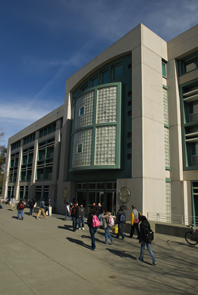Skylight Efficiency
Cool roof technology is increasingly popular as more schools increase roof insulation to reduce HVAC capital expense and year-round operating cost.

While skylights are desirable for their ability to bring light into otherwise dark interiors, they also function as rooftop solar collectors and hinder the ability of cool roof technology to help reduce air conditioning operating costs. If the daylighting benefit is to outweigh the negative impact on the overall energy performance of a cool roof, skylights need to maximize visible light transmission while minimizing solar heat gain.
Equally important is a skylight’s ability to insulate against heat transfer caused by both conduction and convection. The basic construction of typical dual-pane insulating glass — low-e coated glass and clear glass separated by a warm-edge spacer and filled with an inert gas to create an insulating cavity — does a good job of reducing both conductive and convective heat transfer in vertically-mounted windows. However, when this dual-pane (or single-cavity) insulating glass is mounted toward the horizontal, as in a typical skylight, it can lose up to 40 percent of its ability to insulate against convective heat transfer, a direct result of shortening the convective airflow paths.
This means that in the evening and winter, more heat in a school building escapes through a sloped skylight than it does through a vertical window using comparable insulating glass. And during the day, more outdoor ambient heat passes into a property through the glass in a skylight than through similar glass in a vertical window.
Since the energy conservation performance of skylights is primarily a function of the glass, the best way to maximize the energy efficiency of a cool roof is to create a second insulating cavity to reduce convective heat transfer. Triple-pane insulating glass can accomplish this, but unfortunately, is often too heavy to safely mount overhead, particularly for larger skylights.
An ideal solution is suspended film insulating glass, in which one or more heat-reflective coated films are suspended within the glass unit to create multiple insulating cavities at no additional weight. Such lightweight glass maintains a high R value (resistance to heat flow); a low shading coefficient (amount of solar heat radiating through the glass); and high visible light transmission.
In addition, the suspended film practically eliminates ultraviolet radiation that can cause fading, and because the film is clear and colorless, it maintains visual clarity and normal color rendition.
Bruce Lang is vice president of marketing and business development at Southwall Technologies Inc.
